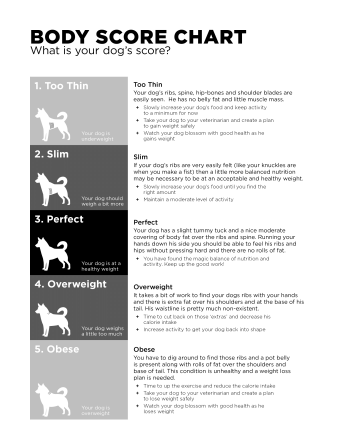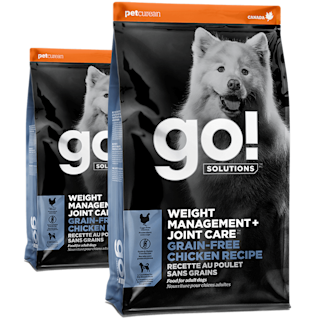September 9, 2024
Body Condition Score for Dogs: Is Your Dog a Healthy Weight?

As devoted pet parents, we all want our furry friends to lead a happy and healthy life. But just like us, every dog is unique—not just in personality but also in health needs. That's where understanding your dog's body condition score becomes essential. Think of it as a fitness tracker for your pet's overall health and wellbeing. Use our body score chart as a guide, however, be sure to discuss options with your vet before making any drastic changes to your pet’s diet.
What is a Body Condition Score?
A Body Condition Score (BCS) is a systematic method to assess the healthiness of your dog's weight and overall physical condition. Ranging from 1 to 5, this score helps you determine whether your dog is underweight, overweight, or just right. It is a crucial tool for monitoring and maintaining your dog’s health.
Identifying your dog's BCS isn’t about numbers—it’s about understanding their health needs and how to address them. An optimal score often correlates with a lower risk of diseases, better mobility, and a higher quality of life. Whether your furry friend is a couch potato or an agile athlete, a body condition score gives you a clear picture of their health status, enabling immediate and precise adjustments to their diet and exercise regime.
How to Use the Dog Body Score Chart
Our dog body score chart is designed to visually guide you through the different scores with corresponding images and descriptions. By comparing your dog to the illustrations, you can pinpoint your dog's BCS. Remember, this isn’t about scrutinizing but about celebrating small wins in your pet’s health journey!

Tailoring Your Approach
Every pet's journey to optimal health is different. If your dog’s score suggests they’re underweight or overweight, it’s time to act, not worry. Adjust their diet, tweak their exercise routines, and consult with a vet. Your proactive steps make all the difference!
Remember, this score is a starting point. Regular check-ins with your veterinarian and adjustments to care are essential in keeping your pet in tip-top shape.

Recommended Solution
Dog Food for Managing a Healthy Weight
Keeping your dog at a healthy weight is key to lifetime zoomies and games of fetch. With a blend of tasty lean proteins and functional ingredients, your pooch won't even notice you've put them on a 'diet'.
View Weight Management + Joint Care dog food


